

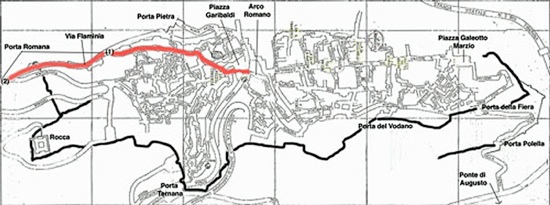
Nequinum
By 299 BC, when the Roman laid siege of the Umbrian settlement that they called Nequinum, it was already well-fortified. This is clear from the account of the siege account by Livy ("History of Rome from its Foundations", Book 10:10):
“Meantime the siege of Nequinum was dragging slowly on and time was being wasted. At length two of the townsmen, whose houses abutted on the city wall, made a tunnel and came by that secret passage to the Roman outposts. They were conducted to the consul, and undertook to admit a detachment of soldiers within the fortifications and the city walls. It did not seem right to reject their proposal, nor yet to accept it off- hand. One of them was therefore instructed to conduct two spies through the underground passage while the other was detained as a hostage. The report of the spies was satisfactory, and 300 soldiers, led by the deserter, entered the city by night and seized the nearest gate. This was broken open, and the consul with his army took possession of the place without any fighting.”
There are no surviving traces of the Umbrian fortifications, and no indication of when they were built.
Narnia
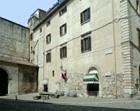
The prosperity of the colony must have been boosted in 220 BC when Via Flaminia. This road arrived from Rome at what is now Piazza Garibaldi. Its subsequent route is unclear:
-
✴it might have run through the colony (entering at the junction at the extreme right of the photograph above); or
-
✴it might have bypassed the colony in the anti-clockwise direction, following the line of the present Via Roma.
The road then crossed the Nera on its way to the Adriatic. Emperor Augustus restored it in 27 BC: the bridge across the Nera was rebuilt at the same time and is still referred to as the Ponte d' Augusto.
According to Procopius (“History of the Wars”: Book V:XVII) when Flavius Belisarius took Rome from the Goths in 536, as part of of the Byzantine reconquest of Italy, his general, Bessas took Narnia “not at all against the will of the inhabitants”. Narnia then formed part of a defensive ring that he threw around Rome. It was still heavily fortified at that time, which is why the Goth Witges left it in Byzantine hands when he marched along Via Flaminia to retake Rome. Procopius explains that this was because Narnia “was difficult of access and on steep ground besides; for it is situated on a lofty hill. And the river Narnus flows by the foot of the hill, and it is this which has given the city its name. There are two roads leading up to the city, the one on the east, and the other on the west. One of these is very narrow and difficult by reason of precipitous rocks, while the other cannot be reached except by way of the bridge which spans the river and provides a passage over it at that point. This bridge was built by Caesar Augustus in early times, and is a very noteworthy sight; for its arches are the highest of any known to us”.
According to the earliest known legend of St Juvenal (BHL 4614), which probably dates to the 7th century, he died in ca. 376 and was buried outside the Porta Superiore on the Via Flaminia. This gate almost certainly stood on the site of the present Arco Romano (see below), near San Giovenale, and it must have provided access to Narnia for travellers from Rome. There must have been a “ Porta Inferiore” through which travellers passed having crossed the Ponte di Augusto, but its location is unknown.
Narni
Narni expanded beyond its Roman walls at some time in the Middle Ages. Much of this expansion was towards the south east, the later site of the Rocca (1367-78). Porta Pietra and the original site of Porta Romano probably correspond to the walls built to enclose the new suburb. Pope Sixtus IV commissioned Porta Ternana (1486) for the wall below the Rocca as part of a project to strengthen the defences of Narni.
An army of Landsknechte (German mercenaries) in the service of the Emperor Charles V, led by the Prince of Orange, sacked Narni on 17th July, 1527, as they marched along Via Amerino after they had sacked Rome. It seems that the city refused them entry and that some of its citizens attacked the forces camped outside their walls. The troops forced entry through Porta Pietra (see below) after a siege of three days, and spent the next two weeks intent upon the destruction of the city. Porta Romana (1545) and Porta della Fiera (1556-9) were part of the subsequent reconstruction project.
Porta Ternana has been the most important of the city gates since 1832, when the present Via Roma was built. Porta Romana was moved to a more open position in 1857, in order to provide a ceremonial entrance, but the opening of the railway station at Narni Scalo in 1866 ensured the pre-eminence of Porta Ternana.
Surviving Gates
Arco Romano
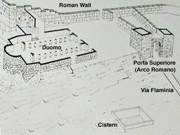

Arco Romano probably stands on the site of a Roman double gate (as in the diagram above) that provided one of only two significant entrances to the Roman city. As noted above, this gate was referred to as Porta Superiore in the legend of St Juvenal, which was probably written in the 7th century.
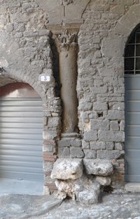
Porta del Vodano
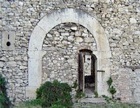
Porta Polella (13th century)
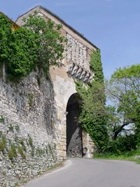
Porta della Fiera (1556-9)
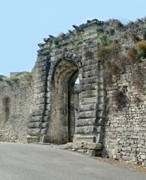
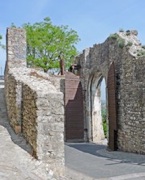
This gate (also known as Porta Nuova) was part of the new circuit of walls that was built after the destruction of 1527. The nearby churches of San Vittore and San Savino, which must have also suffered from the attentions of the Landsknechte, were demolished as part of this programme: the new gate was sometimes referred to as Porta San Vittore. It was designed by the Florentine Nanni di Baccio Bigio (born Giovanni di Bartolommeo Lippi). The wooden doors can still be seen on the inside.
Porta Pietra (13th century)
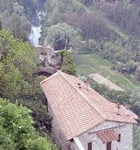
Porta Romana (1545)
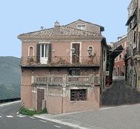
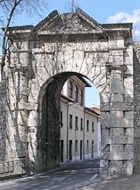
Porta Ternana (1486)
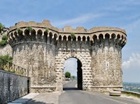
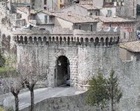
Return to Monuments of Narni.
Return to Walk I: (Arco Romano; Porta del Vodano).
Return to Walk II: (Porta Pietra; Porta Romana; Porta Ternana).
Return to Around Narni: Narni Scalo: (Porta Polella; Porta della Fiera).

